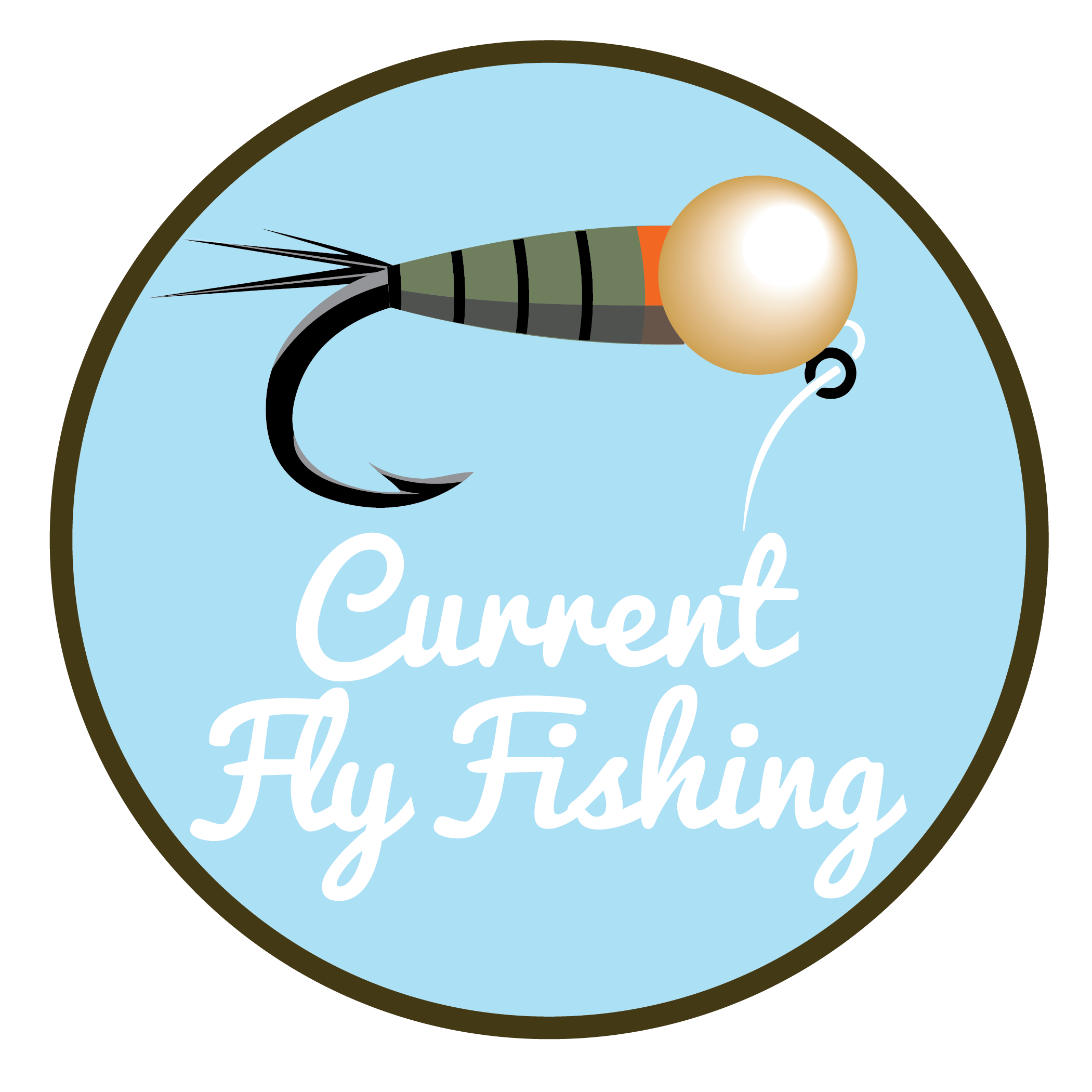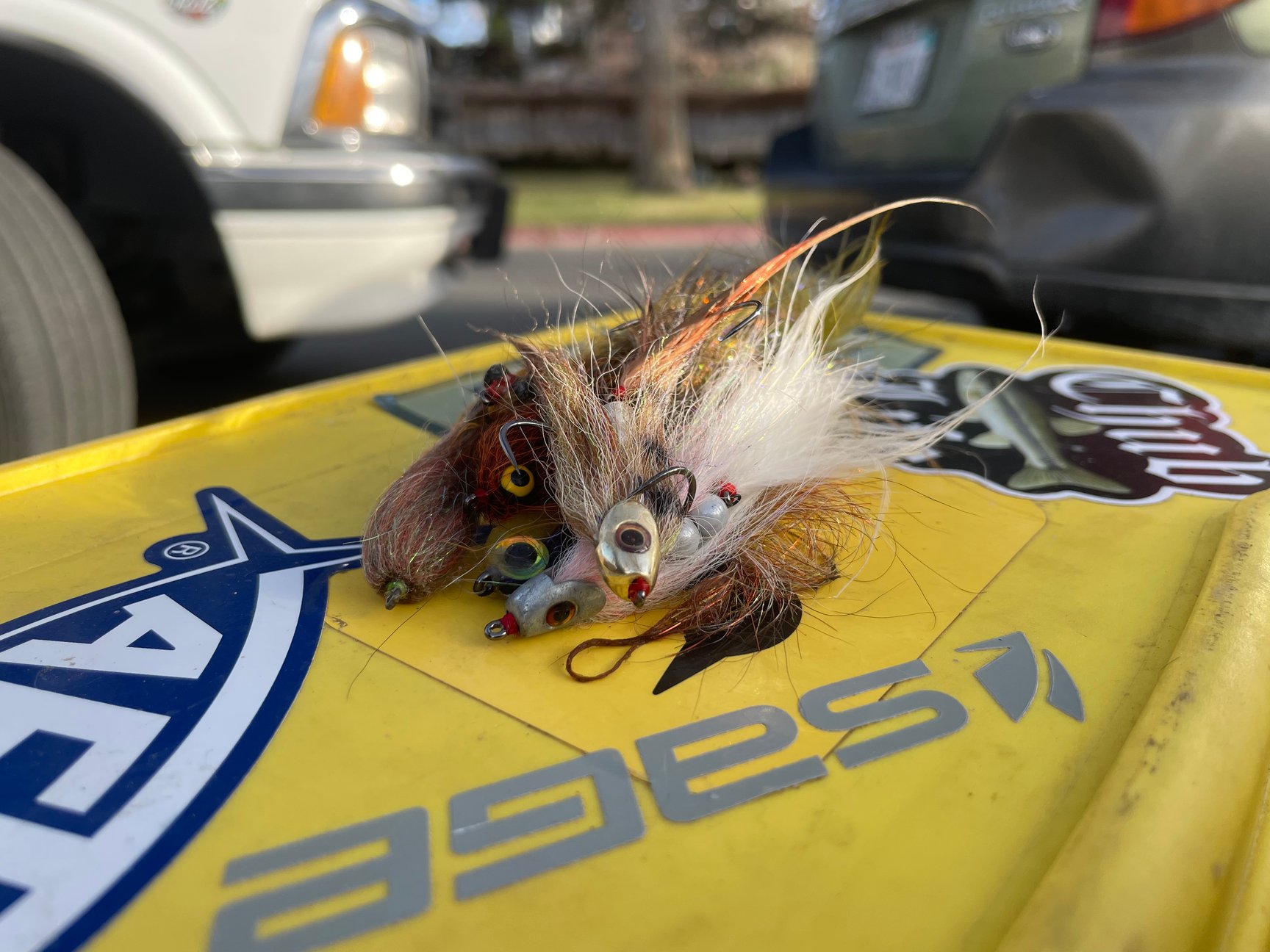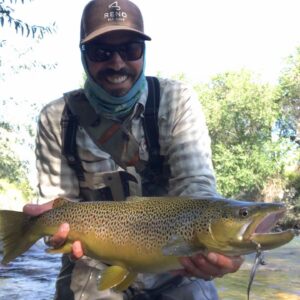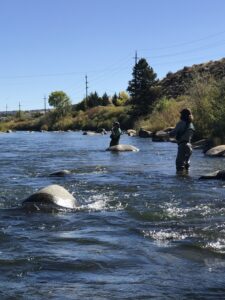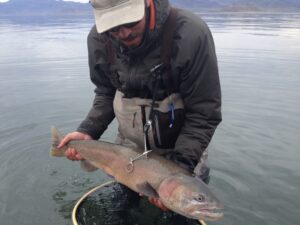Targeting large trout with large flies. What makes a fly a Streamer and how do fish them?
It was 6 am on a mid-June morning, the raft trailer was hooked up to the truck and I was on my way to drop the raft in the water before meeting my clients at 7:30 am. As I drove up Interstate 80 the wind was pushing the truck all over the road. I arrived at the put-in to find the wind gusting 30-50 mph at times with cloudy skies. I shot a text to the clients just to confirm they were prepared to fish on this exceptionally challenging day, and they were. I put the raft in the water and that was it, we had all just committed to making it to the take-out one way or another. I was lucky enough to have an experienced angler in the boat that day. He was determined to cast a 4-inch fly on an 8wt rod with a sinking line for hours on end in search of “The One”. Well, he found the fish he was looking for on the inside shelf of a fast bend in the river in less than 2 feet of water.
Streamer fishing can take many forms. They can be stripped, jigged, or dead drifted any way you choose to fish them one thing is true, they tend to attract larger fish. What makes a fly pattern a Streamer? “Streamer is a broad term used to describe a fly that imitates another fish. They come in many sizes ranging from a hook size 10 up to 0. Many larger patterns are tied with two hooks connected by a wire, this creates a hinge point in the fly and gives the fly a swimming appearance when fished. These types of flies are called articulated and can be deadly here on the Truckee River or in any place that holds large trout.
When fishing Streamers, it’s important to understand what you imitating. Many fly fishing techniques are focused on the idea that if you imitate the trout’s natural food you’ll trick them into eating it. If you fish a fly that’s the right color, shape, and size, and it’s presented in a way the fish is familiar with you stand a good chance of getting a trout to believe what it sees is a real food source and the fish may eat your fly because it’s hungry. Streamer fishing can be a little different. A lot of the fish we catch using this method bite the fly out of aggression, not hunger. Trout can be territorial, especially Brown Trout, when another fish enters that large Brown Trout area it triggers that aggression the strike we’re looking for. Moving the streamer quickly and erratically gives the appearance of a wounded or stressed fish, an easy target.
Tactically speaking, when casting streamers on a traditional weighted fly line floating, sink tip, or full sink it’s very important for the angler to cover lots of water. Fishing near the bank, behind and in front of large rocks and overhanging branches are all good bets for finding that large fish that will be willing to take a swipe at your fly. Specifically speaking about the Truckee River, one can assume that there may only be 2 or 3 very large trout in a given section of the river and it’s up to the angler to find those fish. Each spot you decide to cast to is really only worth a couple of casts, if the fish you’re looking for is there they’ll probably let you know. Cover water, we can’t stress that enough. This is one reason why we really enjoy using this method while floating in the raft. We’re able to cover lots of water relatively quickly targeting both rivers left and right from an elevated platform.
Another method we like involving large streamers is to present a heavily weighted fly using a tight line technique like European Style Nymphing. We typically do this with a long rod in the heavyweight class with an articulated fly tied on an ⅛ oz jig head. This works especially well when walking and wading fishing pocket water. The weight of the fly and the method of presentation allows the fly to quickly sink to depth and be jigged while drifting. It’s deadly out here, I’ll leave it at that.
Micro streamers fished under an indicator or on an ESN or tight line setup can be a great way to fish The Truckee as well. The streamers we use for this technique are a lot smaller than their big brothers mentioned above usually anywhere from a hook size of 10 – 6. Present them with a dead drift and allow the flies to swing out at the end of each drift. I often rig this setup with two flies one micro streamer and one nymph. It’s hard to say whether the fish we catch using this method are biting based on aggression or hungry but either way they tend to like it and are willing to grab it.
Although I mention these techniques in relation to their effectiveness on The Truckee River I would encourage anglers to give them a shot on their home water. Streamer fishing is one of the most exciting ways to fish a fly and the stikes you see and feel are some of the best you’ll ever have, not to mention you’ll be targeting larger trout, and who doesn’t love that?
Dave Harvey
Current Fly Fishing
Owner/Guide
